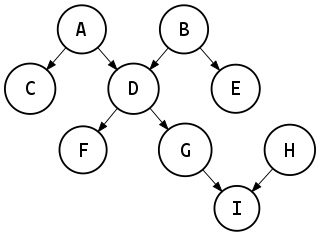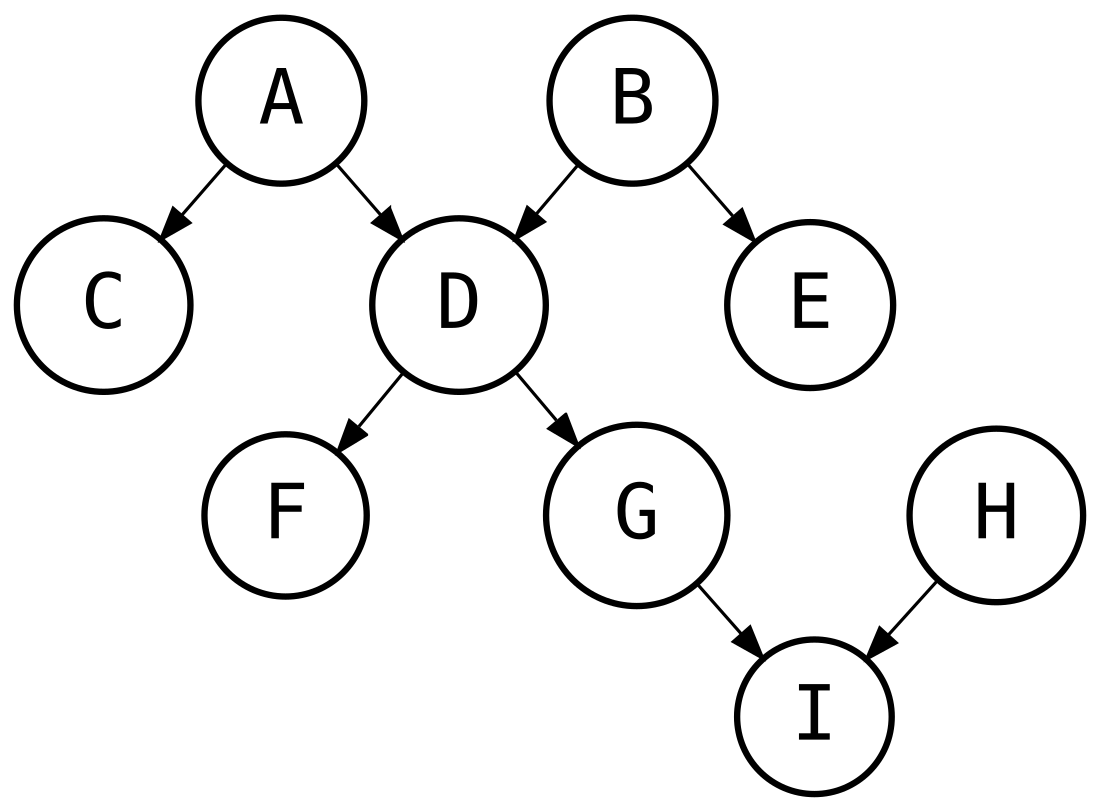Top Qs
Timeline
Chat
Perspective
Polytree
From Wikipedia, the free encyclopedia
Remove ads
In mathematics, and more specifically in graph theory, a polytree[1] (also called directed tree,[2] oriented tree[3] or singly connected network[4]) is a directed acyclic graph whose underlying undirected graph is a tree. In other words, a polytree is formed by assigning an orientation to each edge of a connected and acyclic undirected graph.

A polyforest (or directed forest or oriented forest) is a directed acyclic graph whose underlying undirected graph is a forest. In other words, if we replace its directed edges with undirected edges, we obtain an undirected graph that is acyclic.
A polytree is an example of an oriented graph.
The term polytree was coined in 1987 by Rebane and Pearl.[5]
Remove ads
Related structures
- An arborescence is a directed rooted tree, i.e. a directed acyclic graph in which there exists a single source node that has a unique path to every other node. Every arborescence is a polytree, but not every polytree is an arborescence.
- A multitree is a directed acyclic graph in which the subgraph reachable from any node forms a tree. Every polytree is a multitree.
- The reachability relationship among the nodes of a polytree forms a partial order that has order dimension at most three. If the order dimension is three, there must exist a subset of seven elements , , and (for ) such that, for each , either or , with these six inequalities defining the polytree structure on these seven elements.[6]
- A fence or zigzag poset is a special case of a polytree in which the underlying tree is a path and the edges have orientations that alternate along the path. The reachability ordering in a polytree has also been called a generalized fence.[7]
Remove ads
Enumeration
The number of distinct polytrees on unlabeled nodes, for , is
Sumner's conjecture
Sumner's conjecture, named after David Sumner, states that tournaments are universal graphs for polytrees, in the sense that every tournament with vertices contains every polytree with vertices as a subgraph. Although it remains unsolved, it has been proven for all sufficiently large values of .[8]
Applications
Polytrees have been used as a graphical model for probabilistic reasoning.[1] If a Bayesian network has the structure of a polytree, then belief propagation may be used to perform inference efficiently on it.[4][5]
The contour tree of a real-valued function on a vector space is a polytree that describes the level sets of the function. The nodes of the contour tree are the level sets that pass through a critical point of the function and the edges describe contiguous sets of level sets without a critical point. The orientation of an edge is determined by the comparison between the function values on the corresponding two level sets.[9]
Remove ads
See also
Notes
References
Wikiwand - on
Seamless Wikipedia browsing. On steroids.
Remove ads










